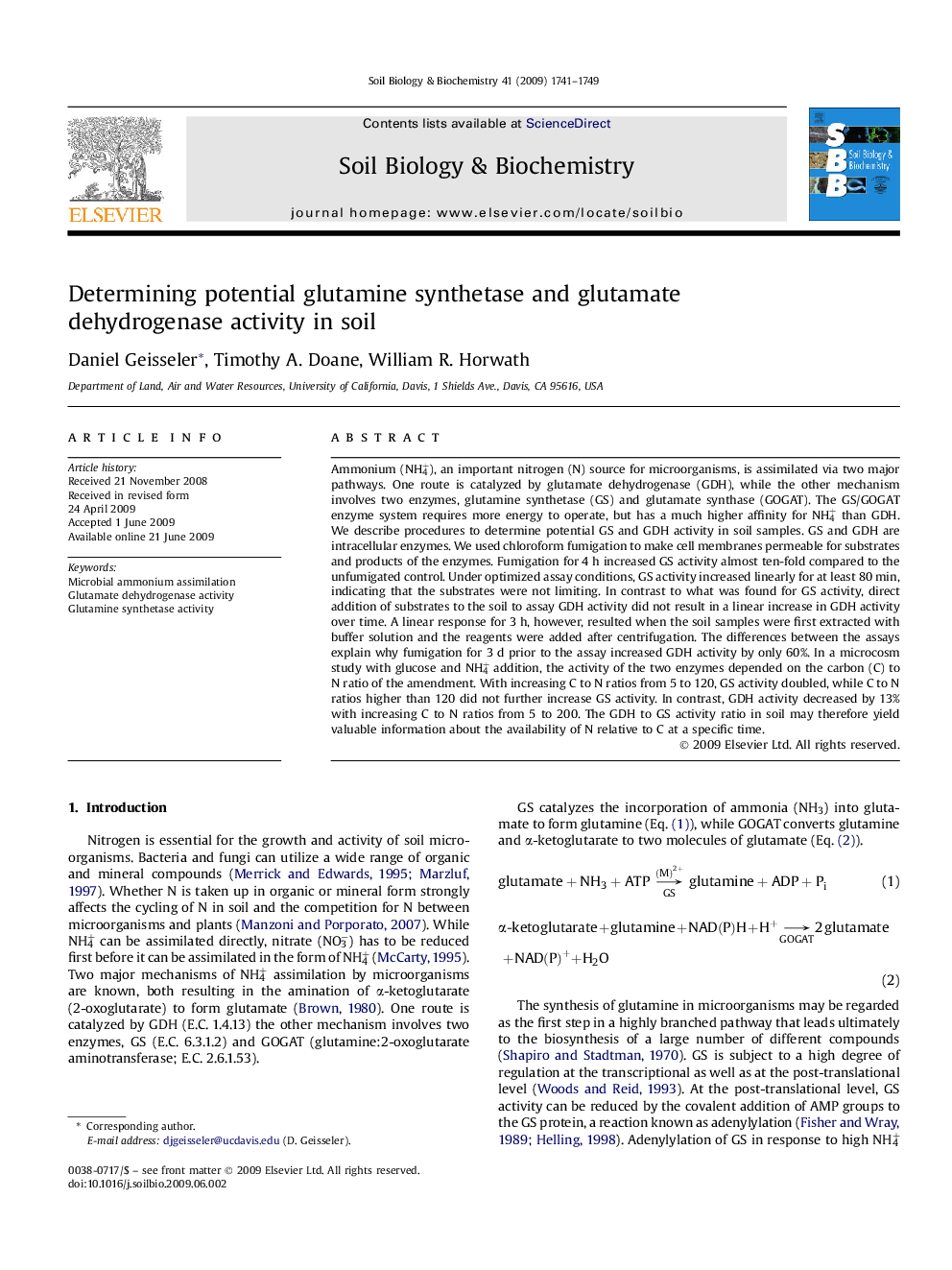| Article ID | Journal | Published Year | Pages | File Type |
|---|---|---|---|---|
| 2026393 | Soil Biology and Biochemistry | 2009 | 9 Pages |
Ammonium (NH4+), an important nitrogen (N) source for microorganisms, is assimilated via two major pathways. One route is catalyzed by glutamate dehydrogenase (GDH), while the other mechanism involves two enzymes, glutamine synthetase (GS) and glutamate synthase (GOGAT). The GS/GOGAT enzyme system requires more energy to operate, but has a much higher affinity for NH4+ than GDH. We describe procedures to determine potential GS and GDH activity in soil samples. GS and GDH are intracellular enzymes. We used chloroform fumigation to make cell membranes permeable for substrates and products of the enzymes. Fumigation for 4 h increased GS activity almost ten-fold compared to the unfumigated control. Under optimized assay conditions, GS activity increased linearly for at least 80 min, indicating that the substrates were not limiting. In contrast to what was found for GS activity, direct addition of substrates to the soil to assay GDH activity did not result in a linear increase in GDH activity over time. A linear response for 3 h, however, resulted when the soil samples were first extracted with buffer solution and the reagents were added after centrifugation. The differences between the assays explain why fumigation for 3 d prior to the assay increased GDH activity by only 60%. In a microcosm study with glucose and NH4+ addition, the activity of the two enzymes depended on the carbon (C) to N ratio of the amendment. With increasing C to N ratios from 5 to 120, GS activity doubled, while C to N ratios higher than 120 did not further increase GS activity. In contrast, GDH activity decreased by 13% with increasing C to N ratios from 5 to 200. The GDH to GS activity ratio in soil may therefore yield valuable information about the availability of N relative to C at a specific time.
